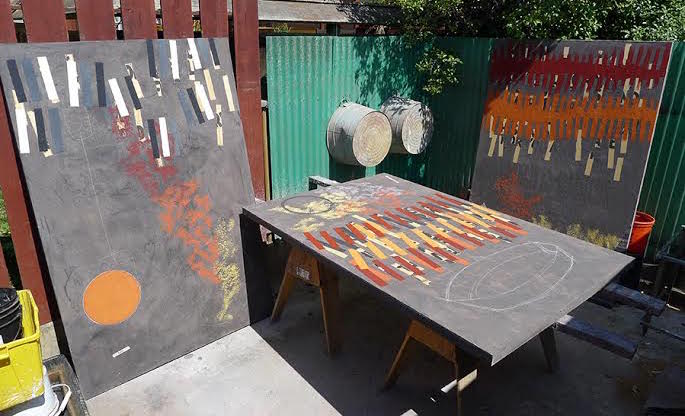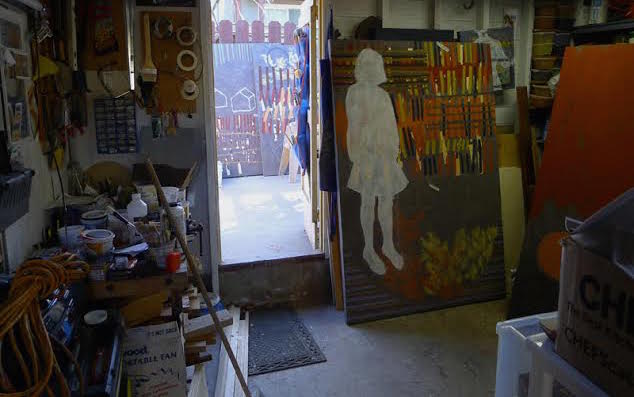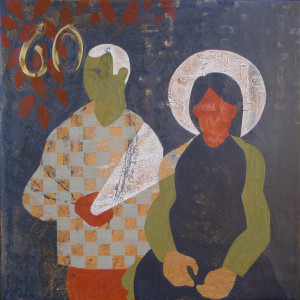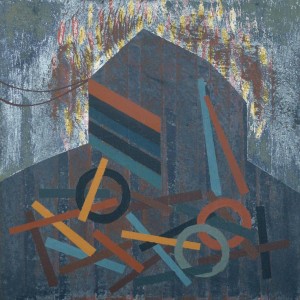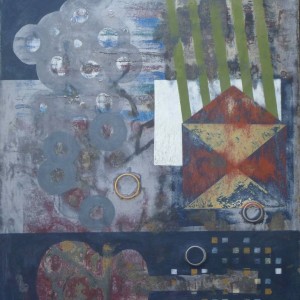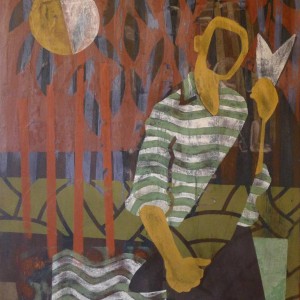Inside the Studio
 Martin Webb
Martin Webb
One of the first things you notice in Martin Webb’s studio is a sign that reads: “Create like a child, edit like a scientist.” He works on multiple paintings simultaneously, influenced by his thoughts about people, places, and the natural world; a recent work was inspired by Woody Guthrie’s classic “This Land Is Your Land.” His process involves mixing pigments, painting many layers onto canvases, sanding particular areas, sometimes incorporating found objects, and always experimenting and editing. Bonus: watch Martin speak about his practice in the video below.
What are the major themes you pursue in your work?
Thoughts about people, places, and home; about age, time, and timelessness; permanence and impermanence; about movement, migration, and belonging.
What was the best advice given to you as an artist?
Art school left me with the mistaken belief that content should come first—that you developed concepts and ideas that would then be realized in some grand piece of work. Of course, that’s a horribly intimidating and restricting way to approach making visual art. Some years later I went to a talk by the British painter Tom Wood who explained that he “painted to find the idea.” He followed his visual instinct, trusting that the conceptual content would emerge along the way. Hearing that was incredibly liberating and really helped set me off on the track I’ve been on ever since.
Prefer to work with music or in silence?
Usually music. Often KALX Berkeley college radio or a long shuffling playlist so I don’t have to make soundtrack decisions while I’m working. Sometimes NPR or podcasts are good, too.
If you could only have one piece of art in your life, what would it be?
Today, it’s The Artist and His Mother by Arshile Gorky, but tomorrow it’ll probably be something different.
Who are your favorite writers?
Recently I’ve enjoyed Aravind Adiga and Junot Diaz. Mark Richard’s short stories are a perennial favorite. I recently read David Sylvester’s interviews with Francis Bacon which are full of razor sharp insights into the process of making paintings. Bacon was very articulate and quotable!






